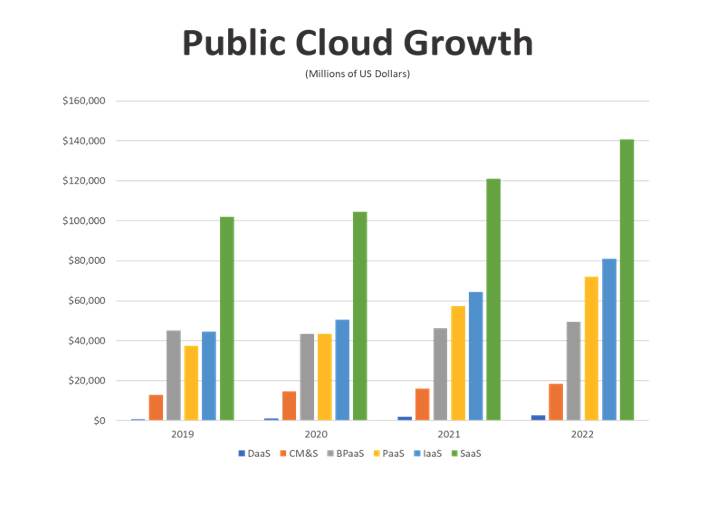TAP Blog Series: Multi-SaaS Management

Everyone in the IT world, especially service providers, knew that digital transformation was in motion, but before this year it seemed (for the most part) to be moving at a relatively comfortable pace. Nobody expected the boost Covid-19 would give it.
Before the advent of digital transformation, everyone from small- and medium-sized businesses (SMBs) to enterprise-level organizations operated in an on-premises world of servers, workstations, switches, routers, firewalls, and loads of software running on Windows boxes.
IT teams in larger organizations were able to deal with the complexity of these on-premises environments because bodies and budgets were generally available. SMBs were not so resource rich or IT savvy, but they didn’t have to be. They outsourced their daily IT administration to the unsung heroes of the IT world—managed services providers (MSPs).
Life for MSPs was chaotic at times, but generally tolerable. Thankfully, there were software companies who created innovative products to help them cope with the pain of concurrently managing many diverse IT environments. These software tools were key to efficiently managing the constant unpredictability of random customer end users submitting service requests that can vary as widely as the weather in Colorado.
Unifying IT administration
These remote monitoring and management (RMM) solutions were built to unify IT administration and provide real-time monitoring and alerting for disparate on-premises environments. RMM tools have been the cornerstone technology of almost every IT service provider’s business and have also been relied upon by most enterprise IT support teams. Even though many customers were starting to stray outside of the on-premises world and adopt SaaS applications (think Microsoft 365, Google Workplace, backup, endpoint security, etc.), administration of these cloud workloads seemed to be reasonably manageable. There wasn’t a pressing need to rely heavily on any type of remote management technology for these SaaS applications.
But then COVID-19 happened and every enterprise and IT service provider on the planet went into scramble mode, shifting every customer and their employees from working on-premises to working remotely. It was basically a three-month, all-hands-on-deck version of IT hell. The phrase “what doesn’t kill you makes you stronger” comes to mind.
Once the dust settled, the reality of what happened started to kick in for everyone in the IT community. For MSPs managing lots of SMBs, they quickly realized there was no longer any reason to continue to recommend anything on-premises to their customer base. Everything could be done in the cloud—and I mean everything. It was cheaper (arguably) and made more sense in the new world of remote everything, and it didn’t take much to convince the SMBs.
Historically, larger organizations were not migrating to the cloud nearly as fast as SMBs due to legacy and governance issues as well as the overwhelming IT nightmares that come with such a major shift in IT environments. Post COVID-19, they too were significantly stepping up the pace of digital transformation. Public cloud adoption was anchored by technologies like Microsoft 365.
Shifting administration to the cloud
The entire IT community has come to the stark realization that RMM vendors or a new category of independent service vendor (ISV) needs to help organize administration of a cloud-managed world. The IT world is forever changed, especially for the service provider community. On-premises environments will continue to ramp down while the world of SaaS continues its meteoric rise.

At the centre of this major shift is Multi-SaaS management, which in the SaaS world translates to user lifecycle management (ULM). At its core, ULM focuses on ensuring IT administrators can easily and securely manage the customers and end users that are consuming all these SaaS applications (Microsoft 365, Google Workspace, Slack, Meraki, Dropbox, Zoom, etc.).
Multi-SaaS management in the world of ULM encompasses new user provisioning, license and attribute administration, changes in access rights and group memberships, as well as user offboarding and archiving. Heavily automating the ULM process leveraging advanced workflows is critical to driving profitability in any IT managed services business. Equally as important is how to unify and control administrator access rights to protect customer and end user data.
A new commodity for the multi-SaaS world
The market needs a software application that allows MSPs to consolidate and streamline ULM tasks across multiple customers and SaaS applications. This would greatly reduce service remediation time and drive increased profitability in every MSP’s business. There is a very short list of emerging ISVs that deliver on this ULM capability (Nuvolex being one of them). However, the good news is that RMM technology is well positioned to bridge the gap between the on-premises and cloud worlds, providing a seamless hybrid remote monitoring and management experience across on-premises resources and SaaS applications. A traditional RMM solution that is fluent in multi-SaaS management will be a very valuable commodity.
While device management will continue to be at the core of the RMM value proposition, it is likely that infrastructure management will not have nearly as prominent a role, especially in the MSP community. That will be replaced by the growing need to support user administration across multiple SaaS applications. Multi-SaaS management will be at the core of RMM 2.0, because SaaS dominates global IT spend—and it all must be managed.
Exactly when we will fully transition to a purely digital world, nobody knows—but it is happening. In the meantime, RMM vendors are laser focused on providing the tools to help make on-premises to multi-SaaS management a seamless user experience for the IT community.
By Brian Hamel,
Brian Hamel is Founder and CEO of Nuvolex
Nuvolex is a member of the SolarWinds MSP Technology Alliance Program (TAP). This blog is part of the TAP blog series, through which we will provide you with relevant and interesting guest blog contributions from our TAP members.
Want to stay up to date?
Get the latest MSP tips, tricks, and ideas sent to your inbox each week.
